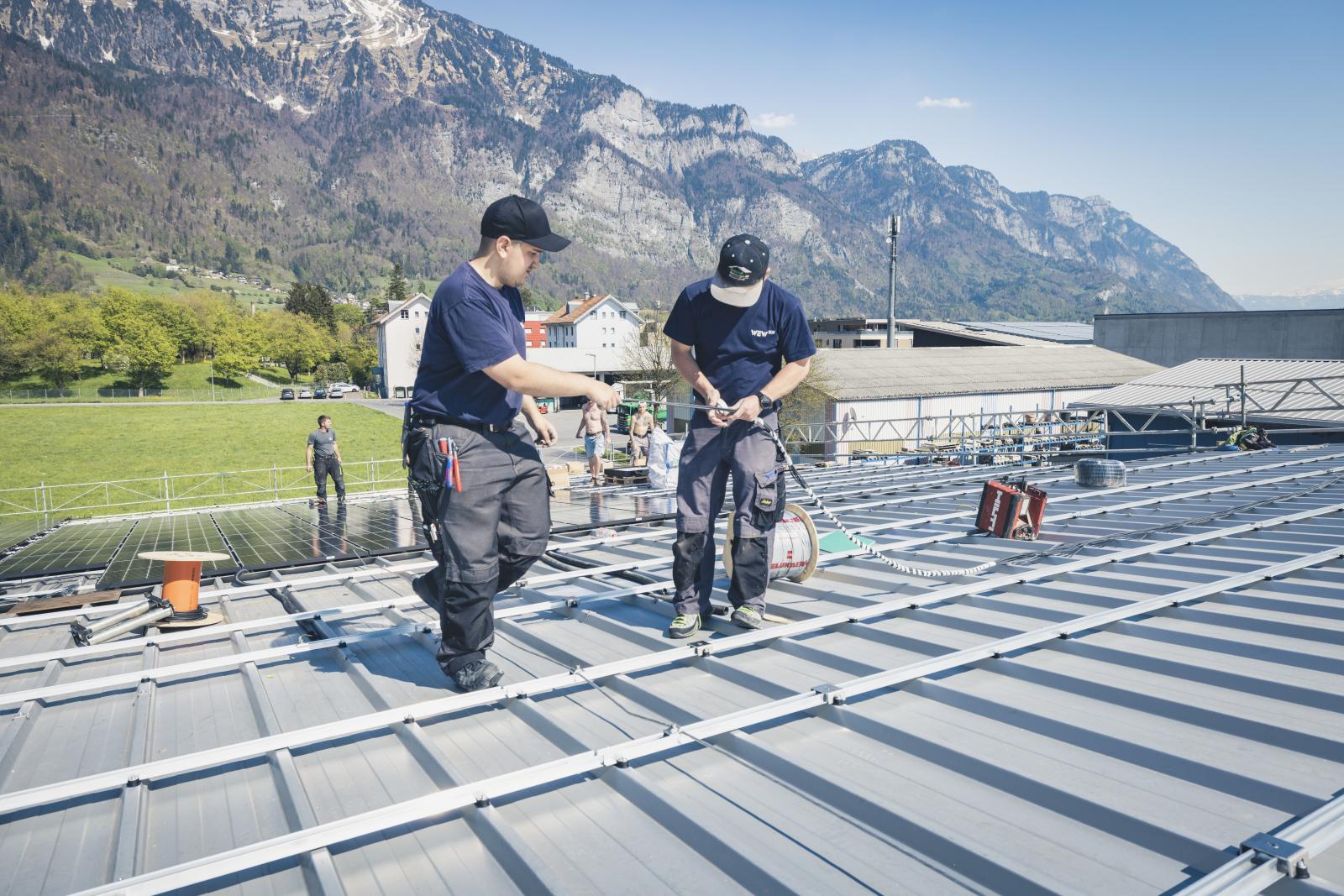Grid2050 - paving the way for the energy transition

Within this project, we work on three strands of research:
- Digitisation: We aim to use advanced electronic infrastructure to stabilise a changing grid and enable scalable communications between devices and grid operators.
- Control: Energy usage is increasing while energy production is becoming more volatile. By using control theory we aim to integrate renewable energy systems and coordinate energy sources and loads.
- Operations: Energy grids are shifting from centralised to decentralised, and in order to allow this shift with minimal disruption we need to create infrastructures that enable grid operators to exploit the full potential offered by renewable energy sources. We will look into pricing structures and regulatory gaps that will ensure the most efficient use of energy peaks.
As part of Grid2050, we are undertaking three key projects:
Walenstadt demonstrator
As a small town with 5000 households that already had modern energy infrastructure, three run-of-the-river hydroelectric power plants, rooftop photovoltaic (PV) power plants, large storage systems (three 4MW, 4MWh batteries), the town of Walenstadt is the ideal first testbed for Grid2050 and the three strands of research.
Here, we work collaboratively with the local energy providers and community to explore future energy solutions in a contained setting that includes household prosumers and essential infrastructure such as a hospital, as well as forward-looking utilities providers who are eager to participate in shaping the future.
As part of this collaboration, we are converting the Walenstadt grid into a controllable testbed. The testbed is planned to be up and running by the end of 2025. Its core features will include:
- Vendor-neutral software interface: Enabling communication between devices with different protocols, and facilitating remote monitoring and data collection.
- Centralised control platform: Located in the utility’s control room, it collects network-wide data and applies smart grid optimisation algorithms.
- Integrated test community: The testbed also integrates a pilot test community of prosuming households – e.g., those with PV systems, electric vehicle chargers and heat pumps – each of which is equipped with an energy management device.
Test community
The Grid2050 test community has been up and running since May 2024, with 25 households taking part. In collaboration with our industry partners, Edion and Solar Manager, we are converting the participating households into controllable assets by equipping them with energy management systems. Not only does the test community allow us to receive very detailed data, test, improve our theoretical models, and coordinate various household devices for the benefit of the overlying grid. Furthermore, by studying these households, we can gain insights into how energy is produced and consumed at the lowest grid level, for example through rooftop solar panels, charging electric vehicles or the use of heat pumps.
Citizen Science
As part of the wider citizen science project, we are working with owners of rooftop solar panels (photovoltaic installations, or PVs) to learn more about their usage and needs. We developed a chatbot powered by a large language model (LLM) to conduct dynamic and interactive interviews at scale. Our chatbot allows users to ask questions about solar energy and quickly provides well-founded information. Through adaptive, bias-mitigating conversations, it offers us a deeper understanding of human behaviour and decision making in the energy transition.
Find out more on the Grid2050 website.


